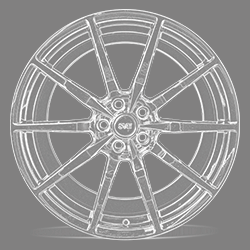FiveLeeter
forum member
Bought a set of UPR control arms a few weeks back and got them installed last weekend (13 days ago). Ever since, the car has experienced a clunk when going over big bumps. Smooth roads it's fine, but big bumps it sounds horrible.
Tried several things, from zip tying the brake lines to the control arm, cutting the bump stops (I also lowered the car at the same time), and neither worked.
Friday, a friend of mine and I took a drive down a known bumpy road to see if he could figure it out. Was definitely predominate from the rear driver side. Parked the car, I laid under it while he rocked the car front to back. Found that the axle side of the lower control arm is shifting about 1.5mm from front to back.
We got back home and jacked up the car, took the wheel off, and removed the LCA bolt. Found that the oem bolt is a stepped design from 14mm down to ~12.5mm, however the steel tool pin that UPR uses is a 14mm full diameter ID. This is causing the control arm to almost torque when on a bump.
Anyone else ever had this problem? Trying to source a replacement bolt, but it's harder than I expected to find out exactly like the OEM bolt but without the step.
Tried several things, from zip tying the brake lines to the control arm, cutting the bump stops (I also lowered the car at the same time), and neither worked.
Friday, a friend of mine and I took a drive down a known bumpy road to see if he could figure it out. Was definitely predominate from the rear driver side. Parked the car, I laid under it while he rocked the car front to back. Found that the axle side of the lower control arm is shifting about 1.5mm from front to back.
We got back home and jacked up the car, took the wheel off, and removed the LCA bolt. Found that the oem bolt is a stepped design from 14mm down to ~12.5mm, however the steel tool pin that UPR uses is a 14mm full diameter ID. This is causing the control arm to almost torque when on a bump.
Anyone else ever had this problem? Trying to source a replacement bolt, but it's harder than I expected to find out exactly like the OEM bolt but without the step.


